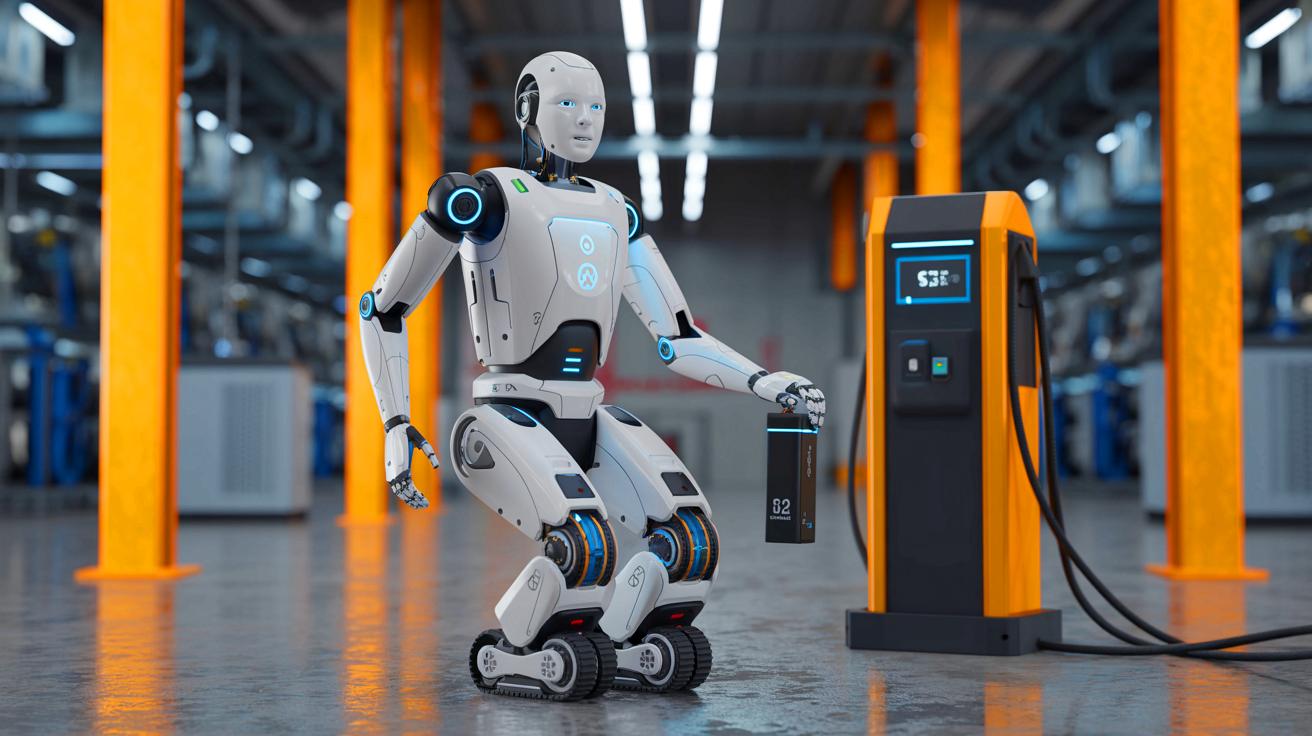| IN A NUTSHELL |
|
Innovation in robotics continues to push the boundaries of what is possible, with the latest breakthrough coming from China’s UBTech. The company has introduced the Walker S2, a humanoid robot designed to revolutionize industrial operations through its ability to autonomously swap its own battery. This cutting-edge technology enables the Walker S2 to perform continuous, uninterrupted work around the clock in various industrial settings. With its advanced features and the promise of enhanced efficiency, the Walker S2 is a significant step forward in the automation of factory floors, blending innovation with practical application.
The Revolutionary Walker S2 Humanoid Robot
The Walker S2 is not just another robot; it represents a substantial leap in robotics technology. Equipped with dual-battery balancing and standardized modules, this robot ensures optimized performance and efficiency. Its ability to autonomously swap batteries is a standout feature, allowing it to operate without interruption for 24/7 in dynamic industrial environments. This capability is made possible by its advanced anthropomorphic bipedal locomotion combined with a hot-swappable battery system. As the first humanoid robot to manage its own power needs, the Walker S2 eliminates the downtime typically associated with battery replacements, making it a game-changer for industries that rely on continuous operations.
Furthermore, the Walker S2’s design is tailored for non-stop industrial activities, with the ability to replace its power pack in just three minutes. This feature not only enhances productivity but also reduces the need for human intervention, streamlining operations and cutting labor costs. By introducing such an innovative solution, UBTech has set a new standard for automation, highlighting the potential for robots to handle more complex and demanding tasks in the future.
Strategic Partnerships for Accelerated Adoption
In May 2025, UBTech Robotics forged a significant partnership with Huawei Technologies, aiming to accelerate the adoption of humanoid robots across China’s factories and homes. This collaboration is set to expand the reach and capabilities of the Walker S2, leveraging Huawei’s technological expertise and market influence. The partnership is expected to drive advancements in humanoid robotics, enhancing their integration into everyday industrial and domestic settings. By combining forces, these two industry leaders are paving the way for a future where robots play a more integral role in various sectors, from manufacturing to household chores.
Such strategic alliances are crucial for the widespread adoption of emerging technologies. They provide the necessary resources and infrastructure to scale innovations like the Walker S2. Through this partnership, UBTech and Huawei are not only fostering technological growth but also contributing to China’s broader goal of becoming a global leader in artificial intelligence and robotics. This collaboration reflects a shared vision of a more automated and efficient future, where robots like the Walker S2 become an essential part of daily life.
Uninterrupted Robot Operations
A video released by UBTech showcases the Walker S2 in action, demonstrating its impressive capabilities. The video highlights the robot’s autonomous battery-swapping process, where it approaches a charging station, detaches the depleted battery, and installs a fresh one—all within a mere three minutes. This seamless operation, captured in detail, underscores the precision and reliability of the Walker S2’s design. The articulated limbs and intelligent battery-handling mechanism are prominently featured, illustrating the robot’s ability to maintain uninterrupted, 24/7 operations.
Such capabilities are particularly beneficial in dynamic factory environments, where efficiency and continuity are paramount. The Walker S2’s ability to autonomously manage its power needs ensures that it can consistently perform its duties without the delays associated with manual battery changes. This advancement not only enhances productivity but also demonstrates the potential for robots to take on more complex roles in industrial settings, further integrating automation into the workforce.
Implications for the Future of Robotics
The introduction of the Walker S2 marks a significant milestone in the field of robotics, with far-reaching implications for the future. By enabling robots to autonomously manage their power requirements, UBTech is addressing one of the major challenges in robotics—ensuring continuous operation without human intervention. This development paves the way for more autonomous robots capable of handling various tasks in different environments, from factories to homes and beyond.
The Walker S2’s capabilities highlight the potential for robots to enhance efficiency and productivity across multiple industries. As companies continue to explore the possibilities of automation, the demand for advanced robots like the Walker S2 is likely to grow. This trend raises important questions about the future of work and the role of robotics in society. How will businesses adapt to this new era of automation, and what impact will it have on the workforce? As we look to the future, these questions remain at the forefront of discussions about the role of technology in shaping our world.
This article is based on verified sources and supported by editorial technologies.
Did you like it? 4.4/5 (24)





